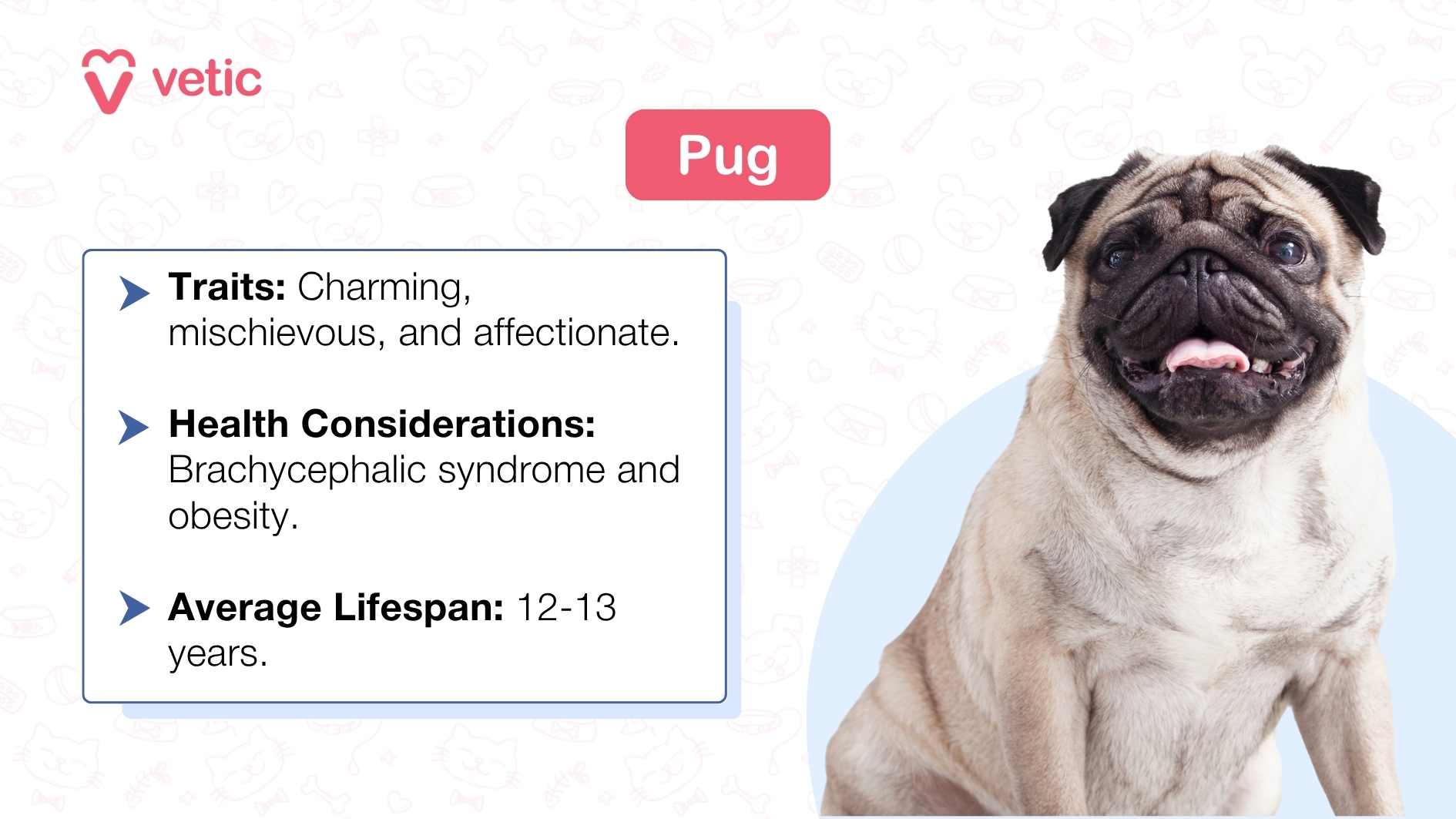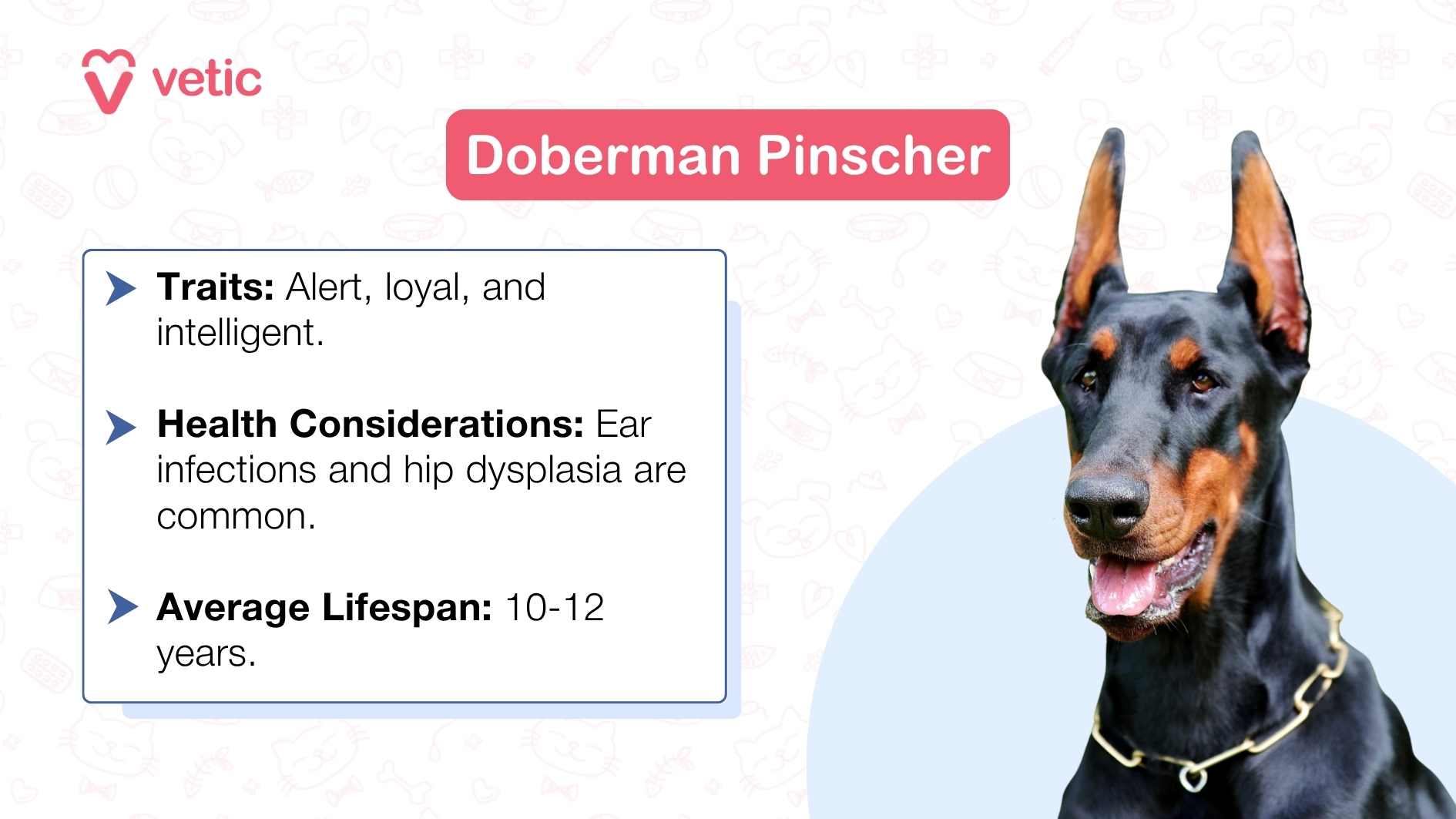Adopting a puppy is a happy occasion, but a big decision. Choosing the right pup for your family can be daunting. The unique traits and the average lifespan of dogs can influence your decision.
This guide explores 15 popular dog breeds in India, highlighting their characteristics, health considerations, the average lifespan of these dog breeds, and why they are cherished by pet parents. From the loyal Labrador Retriever to the charming Indies, discover the perfect furry companion for your home and learn how to ensure they live a happy, healthy life.
1. Labrador Retriever

Average Lifespan: 10-12 years
Traits: Friendly, outgoing, and gentle. They are great with families and children.
Health Considerations: Prone to hip dysplasia and obesity. Regular exercise and a balanced diet are crucial.
2. German Shepherd

Average Lifespan: 9-13 years
Traits: Loyal, intelligent, and versatile. Excellent as working dogs and family protectors.
Health Considerations: Can suffer from hip and elbow dysplasia. Early training and socialisation are key.
3. Golden Retriever

Average Lifespan: 10-12 years
Traits: Friendly, tolerant, and playful. Perfect companions for families.
Health Considerations: Prone to cancer and hip dysplasia. Regular vet check-ups are important.
4. Beagle

Average Lifespan: 12-15 years
Traits: Curious, friendly, and energetic. They love to explore and are great with kids.
Health Considerations: Can develop epilepsy and hip dysplasia. Beagles are highly susceptible to food allergies and allergies in general. They need regular exercise and mental stimulation.
5. Pug

Average Lifespan: 12-15 years
Traits: Charming, mischievous, and affectionate. Known for their expressive faces.
Health Considerations: Brachycephalic syndrome and obesity. They need moderate exercise and a healthy diet.
6. Boxer

Average Lifespan: 10-12 years
Traits: Fun-loving, active, and loyal. Excellent with children and families.
Health Considerations: Prone to heart conditions and cancer. Regular exercise and health screenings are vital.
7. Rottweiler

Average Lifespan: 9-10 years
Traits: Confident, loyal, and protective. Great for families with experience in handling dogs.
Health Considerations: Hip dysplasia and heart problems are common. Training and socialisation from an early age are essential.
8. Dachshund

Average Lifespan: 12-16 years
Traits: Clever, lively, and courageous. They have a unique body shape. They are good with children.
Health Considerations: Prone to spinal issues due to their long backs. Weight management is crucial.
9. Shih Tzu

Average Lifespan: 10-18 years
Traits: Affectionate, happy, and outgoing. Excellent companions for families.
Health Considerations: Prone to dental issues, eye problems such as corneal ulceration and brachycephalic syndrome. Regular grooming and dental care are necessary.
10. Great Dane

Average Lifespan: 7-10 years
Traits: Gentle, friendly, and dependable. Despite their size, they are great with kids.
Health Considerations: Prone to bloat and heart conditions. Regular vet visits and a proper diet are important.
11. Siberian Husky

Average Lifespan: 12-15 years
Traits: Friendly, energetic, and independent. Known for their striking appearance and stamina.
Health Considerations: Hip dysplasia and eye conditions. They need a lot of exercise and mental stimulation.
12. Indie Dog

Average Lifespan: 13-16 years
Traits: Intelligent, alert, and hardy. Adapted to the Indian climate and lifestyle.
Health Considerations: Generally healthy with fewer genetic issues. Regular vet visits and a balanced diet keep them healthy.
13. Doberman Pinscher

Average Lifespan: 10-12 years
Traits: Alert, loyal, and intelligent. Excellent as guard dogs and family protectors.
Health Considerations: Prone to heart conditions and hip dysplasia. Proper training and exercise are crucial.
14. Cocker Spaniel

Average Lifespan: 10-14 years
Traits: Gentle, affectionate, and playful. Great with children and families.
Health Considerations: Ear infections and hip dysplasia are common. Regular grooming and health check-ups are necessary.
15. Pomeranian

Average Lifespan: 12-16 years
Traits: Lively, bold, and affectionate. They are great companions for families and individuals.
Health Considerations: Dental issues and tracheal collapse are common. Regular dental care and vet visits are important.
Do Large Dog Breeds Have a Shorter Lifespan Compared to Small Dog Breeds?
Yes, generally, large dog breeds tend to have shorter lifespans compared to smaller breeds, who do not have BOAS. This is due to several factors:
Growth Rate: Larger breeds grow rapidly, which can strain their bodies and lead to earlier onset of age-related issues.
Genetics: Large breeds are genetically predisposed to certain health conditions like hip dysplasia, heart issues, and certain cancers.
Metabolism: Larger dogs have slower metabolisms, leading to different ageing processes compared to smaller dogs.
Smaller dog breeds including the Indian Spitz enjoy a longer lifespan compared to larger breeds.
Why Do Brachycephalic Dog Breeds Have a Shorter Lifespan?
Brachycephalic (short-nosed) breeds like Pugs, Shih Tzus, Pitbulls, Boxers and Chowchow often have shorter lifespans due to respiratory issues and other health problems:
Breathing Difficulties: Their short nasal passages can lead to brachycephalic obstructive airway syndrome (BOAS), making it hard for them to breathe, especially in hot weather or during physical exertion.
Heat Sensitivity: They are more prone to heatstroke due to inefficient panting.
Dental Problems: Their compact jaws can cause dental crowding and gum diseases.
Eye Issues: Their prominent eyes are more susceptible to injuries and infections.
Making Memories with Your Pet
While predicting the exact lifespan of a dog can be challenging, what matters most is the quality of life and the memories made along the way. Regular veterinary care, a balanced diet, and plenty of love and attention can help ensure your furry friend lives a happy and healthy life. Remember, every dog is unique and brings its own special joy to your life.
In the end, it’s the moments you share with your pet that count the most. Embrace the joy and companionship they bring, and cherish every moment with your paw baby.
FAQs about Common Dog Breeds and Their Lifespans
1. Which dog breed lives the longest in India?
Indie dogs often live 13–16 years, as they’re hardy, low-maintenance, and naturally adapted to Indian conditions.
2. What is the average lifespan of popular dog breeds in India?
Most dog breeds in India live 10–15 years, depending on genetics, size, diet, exercise, and veterinary care.
3. Do small dog breeds in India live longer than large breeds?
Yes, smaller dog breeds generally outlive larger breeds due to slower aging, fewer genetic health issues, and lower strain.
4. Which dog breeds in India are easiest to care for?
Indie dogs, Beagles, and Pugs are easy to manage, needing minimal grooming and adapting well to Indian households.
5. How can I increase my dog’s lifespan in India?
Provide a balanced diet, regular vet check-ups, timely vaccinations, exercise, and a stress-free environment to extend lifespan.
6. Are brachycephalic breeds safe to adopt in India’s hot climate?
Brachycephalic dogs like Pugs need extra care in Indian heat due to breathing difficulties and risk of heatstroke.
7. Which dog breeds are best for families with children in India?
Labrador Retrievers, Golden Retrievers, and Shih Tzus are family-friendly, gentle, and perfect companions for children in Indian homes.
